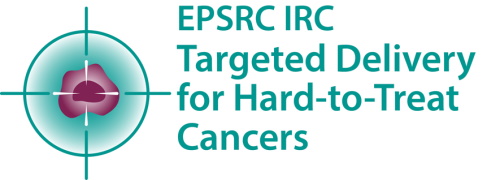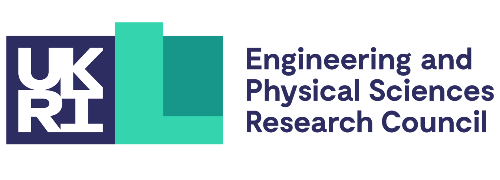
Submitted by L. Millard on Thu, 02/09/2021 - 13:49
A co-authored paper with contributions from the IRC’s Dr David Fairen-Jimenez and Professor Oren A. Scherman and lead author Dr Xu Chen, Research Associate at the Adsorption and Advanced Materials Lab at the University of Cambridge, has been published in the September issue of the ‘Journal for the American Chemical Society’ and makes a breakthrough in the shelf-life of metal-organic framework nanoparticles in biomedical applications.
The paper, titled ‘Formulation of Metal-Organic Frameworks-based Drug Carrier by Controlled Coordination of Methoxy PEG Phosphate: Boosting Colloidal Stability and Re-dispersibility’, brings focus to the wide study of metal-organic framework nanoparticles (nanoMOFs) in biomedical applications. It also highlights the failure to date of efforts to overcome the limitations of the shelf-life of nanoparticles in solution that present significant barriers to their clinical exploitation.
The potential clinical benefits of these improvements are an enhanced therapeutic efficacy of drugs, reduced systemic side effects, and improved patient’s adherence to regimen by reducing the dose and administration frequency. This is especially relevant to the IRC in targeted delivery where we aim to develop new technologies to effectively deliver drugs for the treatment of hard-to-treat cancers Dr David Fairen-Jimenez, Adsorption and Advanced Materials Lab, University of Cambridge
“We know now that nanoparticles can ‘age’ when stored, an issue that can have a negative impact on the properties that make these molecules so attractive such as biocompatibility, dispersibility and high stability,” said Dr David Fairen-Jimenez, Royal Society University Research Fellow (URF) and Reader in Molecular Engineering in the Department of Chemical Engineering & Biotechnology at the University of Cambridge and lead at the Adsorption & Advanced Material Laboratory (AAML). “Most nanocarriers have to be kept in solution for prolonged periods of time, resulting in potential long-term aggregation and drug release. A solution for this limitation is to lyophilize the nanoparticles and redisperse them when needed, a process proven to be unsuccessful for the majority of carriers. In our latest paper, we show that nanoMOFs are able to keep their characteristics after lyophilization – a freeze-drying process that can stabilise the nanoparticles – due to a ‘protective coating’ materialised by the use of PEG-phosphate. This process consolidates the use of MOFs and their translation into the field of drug delivery for their clinical application in the prevention, diagnosis, and treatment of diseases. We focussed on cancer applications, but it can be used in other diseases beyond that.”
The paper proposes “a new post-synthetic modification of nanoMOFs with phosphate-functionalized methoxy polyethylene glycol (mPEG-PO3) groups which, when combined with lyophilization, leads to the formation of re-dispersible solid materials. This approach can serve as a facile and general formulation method for the storage of bare or drug-loaded nanoMOFs”. This modification that obtains PEGylated nanoMOFs shows greater stability and delayed drug release kinetics.
“The stability of nanoparticles relates to their structural preservation. By PEGylating nanoMOFs, several structural properties that influence their crystallinity, shape, size, or aggregation are sheltered from storage-induced modifications. A similar trend is seen for drug release kinetics, where PEGylation ‘blocks’ the drug molecules within the MOF pore, thus providing the possibility of prolonging the diffusion time and slowing down the release of the encapsulated drugs,” explains Dr Fairen-Jimenez. “The potential clinical benefits of these improvements are an enhanced therapeutic efficacy of drugs, reduced systemic side effects, and improved patient’s adherence to regimen by reducing the dose and administration frequency. This is especially relevant to the IRC in targeted delivery where we aim to develop new technologies to effectively deliver drugs for the treatment of hard-to-treat cancers.”
Outlining the development of a formulation strategy for nanoMOFs-based carriers using green, mild conditions compatible with human health and environmental sustainability, the paper describes the PEGylation process which was simply performed in water by using readily-prepared methoxy PEG phosphate, without the introduction of foreign reagents. The paper reports: “Remarkably, and although this is generally ignored, in almost all cases, nanoMOFs-based drug carriers cannot be re-dispersed once dried and had to be kept in suspension in solution. Again, this limits their translation into the field of drug delivery, as nanoMOFs in solution – and especially those loaded with drugs – will show a limited shelf-life arising from potential long-term aggregation and drug release.”
The paper’s findings overcome a key problem in the evaluation of current MOF-based drug carriers and bring opportunity for their development with improved shelf-life enabling pharmaceutical exploitation. It concludes: “Since the majority of established MOF-based drug delivery vehicles are kept in wet conditions, this work for the formulation of re-dispersible drug-containing MOF composites not only represents an easy way to increase the colloidal stability of nanoMOFs and simultaneously endow them with water re-dispersability through the use of a phosphate-functionalized PEG, but also provides inspiration for the storage of MOFs-based drug carriers, as well as new drug release options which holds great potential for the biomedical application.”
• Read the full paper ‘Formulation of Metal-Organic Frameworks-based Drug Carrier by Controlled Coordination of Methoxy PEG Phosphate: Boosting Colloidal Stability and Re-dispersibility’ in the Journal of the American Chemical Society 2021, 143, 34, 13461-13462 (Spotlights)Publication Date (Web):August 24, 2021 Society’ here.


